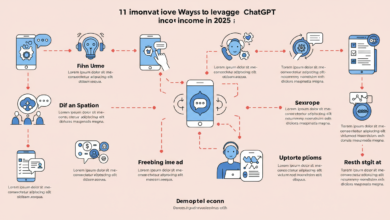Temporarily Closing: Strategies, Implications, and Best Practices

In the lifecycle of a business, there may come a time when temporarily closing becomes necessary. Whether due to financial challenges, seasonal fluctuations, renovations, or unexpected events like natural disasters or pandemics, a temporary closure can help a business regroup and return stronger. However, managing this process effectively is crucial to ensure minimal disruption and to maintain trust with customers, employees, and other stakeholders.
Why Businesses Choose Temporary Closure
Temporary closures are not uncommon, and the reasons for taking such a step can vary widely. Here are some of the most common scenarios:
- Renovations and Upgrades: Businesses may close temporarily to refurbish their premises or upgrade equipment. This ensures a better customer experience and improved operations upon reopening.
- Seasonal Demand: Some businesses, such as ice cream parlors or ski resorts, may operate on a seasonal schedule, closing during off-peak periods.
- Economic Challenges: Financial pressures or declining sales might necessitate a temporary shutdown to reassess business strategies.
- Unexpected Events: Natural disasters, health crises, or supply chain disruptions can force businesses to close until the situation stabilizes.
- Regulatory or Compliance Issues: Businesses might pause operations to address legal or regulatory concerns, ensuring they meet all requirements before resuming activities.
Preparing for Temporary Closure
A temporary closure requires careful planning and communication to mitigate potential negative impacts. Here are key steps to consider:
- Develop a Clear Plan: Outline the reasons for the closure, the expected duration, and the specific tasks to be accomplished during the downtime. A well-thought-out plan helps keep everyone aligned.
- Notify Stakeholders: Transparent communication is critical. Inform customers, employees, suppliers, and other stakeholders about the closure in advance. Use multiple channels, such as email, social media, and signage, to ensure the message reaches everyone.
- Secure the Premises: If the closure involves physical locations, ensure the premises are secured. This might include turning off utilities, locking doors, and activating security systems.
- Maintain Customer Engagement: Even while closed, staying connected with your customer base is important. Use social media updates, newsletters, or special promotions to maintain interest and loyalty.
- Handle Employee Concerns: Be transparent with employees about the reasons for the closure and their role during this period. If layoffs or reduced hours are necessary, provide clear communication and support where possible.
- Financial Planning: Assess the financial implications of the closure. Budget for fixed expenses, such as rent or insurance, and explore options like loans or government assistance if needed.
Challenges of Temporary Closure
While a temporary closure can be beneficial, it also comes with challenges that need to be managed effectively:
- Loss of Revenue: The most immediate impact is the halt in income. Planning for this and managing cash flow is essential to weather the closure.
- Customer Retention: Out of sight can mean out of mind. Without proper engagement strategies, businesses risk losing customers to competitors.
- Operational Disruptions: Restarting operations after a closure can be challenging, especially if there are delays or unforeseen issues.
- Employee Morale: Employees may feel uncertain about their future, which could lead to reduced morale or turnover.
- Reputation Risks: Poor communication or prolonged closures without updates can damage a business’s reputation.
Best Practices for a Successful Temporary Closure
To ensure that a temporary closure achieves its goals with minimal disruption, consider these best practices:
- Set a Timeline: Even if the exact reopening date isn’t certain, provide stakeholders with a tentative timeline and keep them updated about any changes.
- Communicate Frequently: Regular updates reassure stakeholders and maintain trust. Let customers and employees know about progress and reopening plans.
- Leverage Technology: Use technology to maintain business operations where possible. For example, if you’re a retailer, consider selling online during the closure.
- Stay Connected with Employees: Check in with staff regularly, provide updates, and offer training opportunities to prepare them for reopening.
- Evaluate and Adapt: Use the downtime to assess your business’s strengths and weaknesses. Implement changes that could improve efficiency or profitability.
Reopening After a Temporary Closure
When it’s time to reopen, a strategic approach ensures a smooth transition. Here are steps to consider:
- Announce the Reopening: Create excitement and awareness through marketing campaigns, social media posts, and email announcements. Highlight any improvements made during the closure.
- Test Operations: Conduct a soft reopening to test systems, train employees, and address any operational hiccups before fully resuming.
- Incentivize Customers: Offer promotions, discounts, or events to attract customers back and reestablish your presence in the market.
- Monitor Performance: Track key performance indicators (KPIs) to measure the success of the reopening and make adjustments as needed.
- Celebrate the Return: A reopening celebration can create positive buzz and show appreciation to loyal customers and employees.
Examples of Successful Temporary Closures
Many businesses have navigated temporary closures effectively. For instance:
- Renovation Success: A local coffee shop closed for three months to redesign its interior. During this time, it maintained customer engagement through social media updates and reopened to record sales.
- Seasonal Shutdown: A family-owned farm store closed during winter but kept customers informed about the reopening date and upcoming events. This transparency fostered loyalty and anticipation.
- Pandemic Response: A fitness studio paused operations during the COVID-19 pandemic but pivoted to offering virtual classes. This adaptability retained members and even attracted new ones.
Conclusion
Temporary closures, while challenging, can be an opportunity for growth and improvement when handled strategically. By planning carefully, communicating transparently, and maintaining engagement with stakeholders, businesses can turn a potential setback into a stepping stone. Whether addressing operational challenges, enhancing facilities, or responding to external factors, a temporary closure need not signal trouble—it can be a proactive step toward a stronger future.



